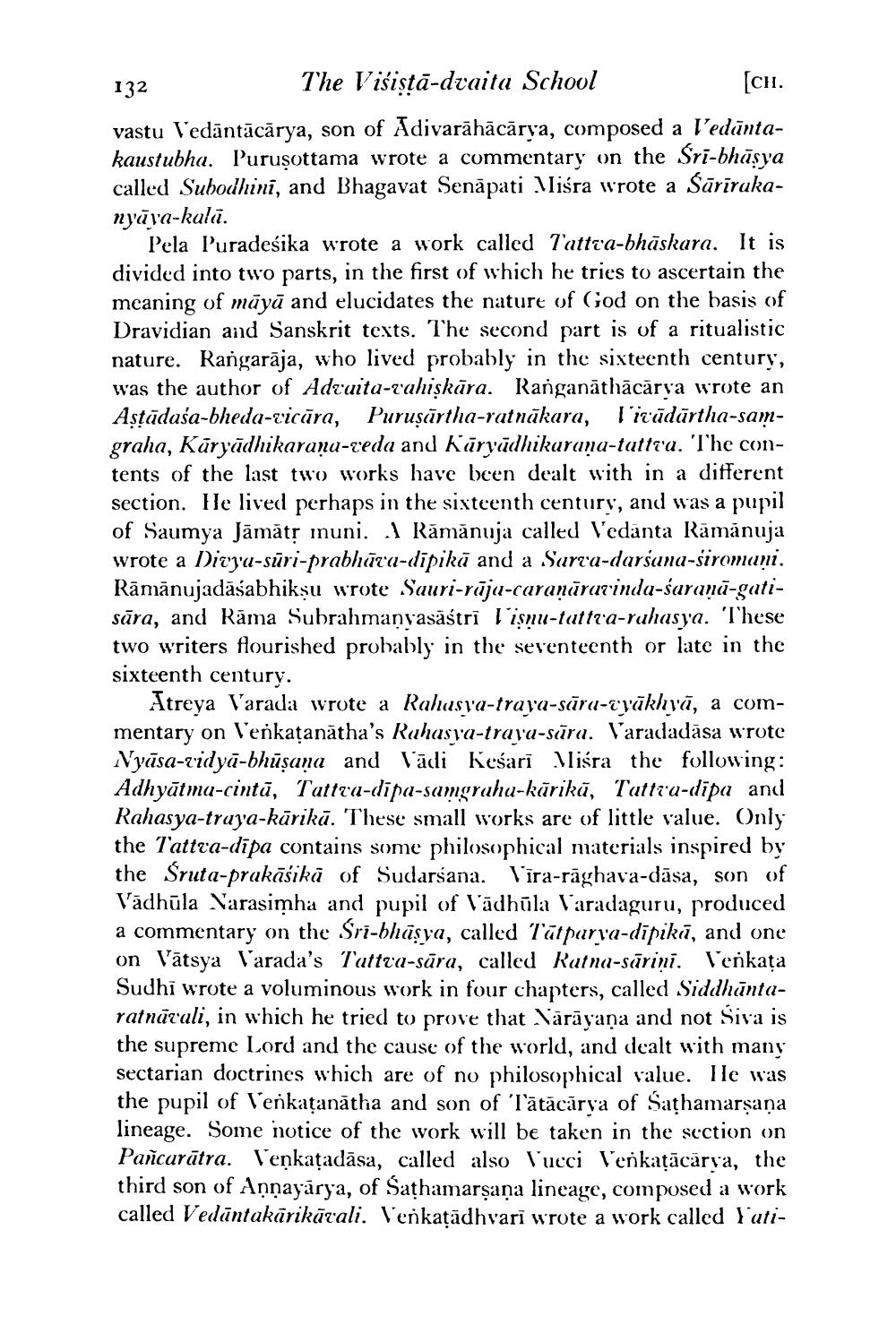________________
132
The Višistā-draita School
[CH. vastu Vedāntācārya, son of Adivarāhācārya, composed a l'eduntakaustubha. Purusottama wrote a commentary on the Sri-bhāşya called Subodhini, and Bhagavat Senāpati Viśra wrote a Sārīrakanyara-kalū.
Pela Puradesika wrote a work called Tattra-bhāskara. It is divided into two parts, in the first of which he tries to ascertain the meaning of māyā and elucidates the nature of God on the basis of Dravidian and Sanskrit texts. The second part is of a ritualistic nature. Rangarāja, who lived probably in the sixteenth century, was the author of Adraita-rahişkūra. Ranganāthācārya wrote an Astādaśa-bheda-ricūra, Purușurtha-ratnākara, litūdārtha-samgraha, Kāryādhikaranu-teda and Kūryūdhikarana-tattia. The contents of the last two works have been dealt with in a different section. He lived perhaps in the sixteenth century, and was a pupil of Saumya Jāmāts muni. I Rāmānuja called V'edānta Rāmānuja wrote a Divya-sūri-prabhūra-dipikā and a Surva-darsana-siromani. Rāmānujadāśabhikṣu wrote Sauri-rūju-caraņāruvinda-sarana-gatisāra, and Rāma Subrahmanyasāstrī l'işnu-tuttra-rahasya. These two writers flourished probably in the seventeenth or late in the sixteenth century.
Atreya Varada wrote a Rahusia-traya-saīru-cyākhyā, a commentary on l'enkațanātha's Rahasya-trava-sūra. Varadadāsa wrote Nyāsa-vidyā-bhūsana and lādi Kesari Viśra the following: Adhyātma-cintā, Tattra-dipa-samgrahu-kārikā, Tattra-dipa and Rahasya-traya-kārikā. These small works are of little value. Only the Tattra-dipa contains some philosophical materials inspired by the Sruta-prakāśikā of Sudarsana. Vīra-rāghava-dāsa, son of Vādhūla Narasimha and pupil of Vādhūla l'aradaguru, produced a commentary on the Sri-bhūşya, called Tatpurva-dipikiī, and one on Vātsya Varada's Tattra-sāra, called Ratna-sūrini. Verkata Sudhi wrote a voluminous work in four chapters, called Siddhantaratnārali, in which he tried to prove that Nārāyaṇa and not Siva is the supreme Lord and the cause of the world, and dealt with many sectarian doctrines which are of no philosophical value. Ile was the pupil of Venkațanātha and son of Tātācārya of Sathamarșaņa lineage. Some notice of the work will be taken in the section on Pancurātra. Venkațadāsa, called also lucci Venkatācārya, the third son of Annayārya, of Sathamarşaņa lineage, composed a work called Vedintakärikāvali. Venkatādhvari wrote a work called Yati




